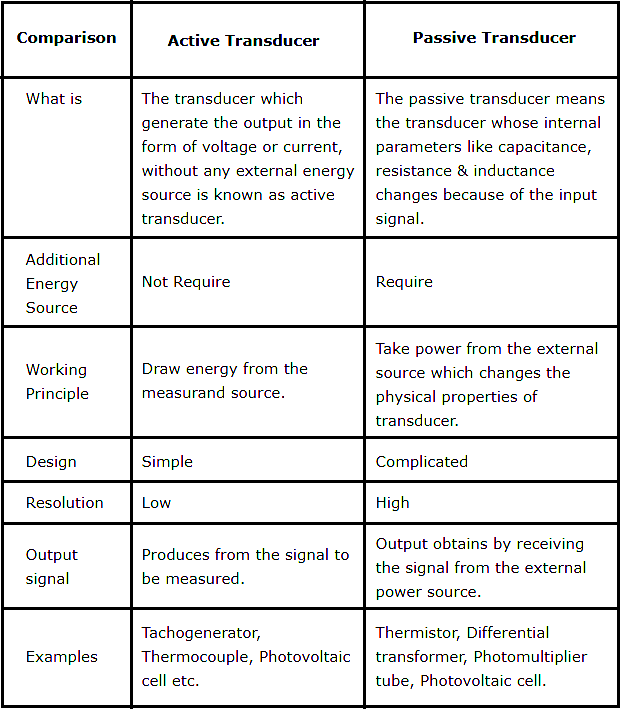Transducers play an important role in the field of instrumentation and control engineering. Any energy in a process should be converted from one form into another form to make the communication from one rectification sector to another.
Transducer is a device which converts one form of energy into another form i.e,. the given non-electrical energy is converted into an electrical energy.
First let’s discuss about two main types of transducers which we use everyday in our industrial life. They are
There are two types of transducers, they are:
Active transducer is a device which converts the given non-electrical energy into electrical energy by itself. Thermocouple, Photovoltaic cell and more are the best examples of the transducers
Passive transducer is a device which converts the given non-electrical energy into electrical energy by external force. Resistance strain gauge, Differential Transformer are the examples for the Passive transducers.

The classification of transducers are made from the following basis:
VFD simulator download: Master the online tool from the Yaskawa V1000 & programming software for…
The conveyor sorting machine is widely used in the packing industries using the PLC program…
Learn the example of flip-flop PLC program for lamps application using the ladder logic to…
In this article, you will learn the STAR DELTA programming using PLC controller to start…
Lube oil consoles of rotary equipment packages in industrial process plants are usually equipped with…
Rotating equipment packages such as pumps, compressors, turbines need the lube oil consoles for their…